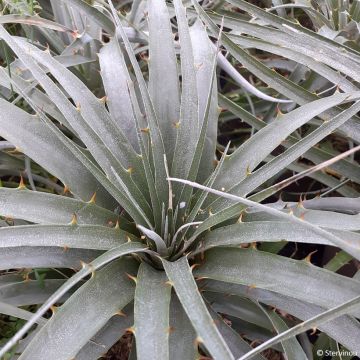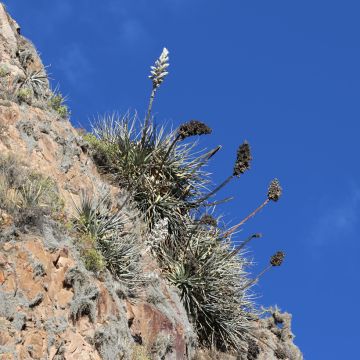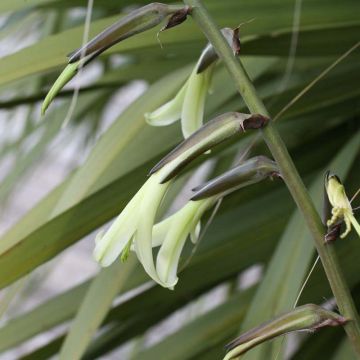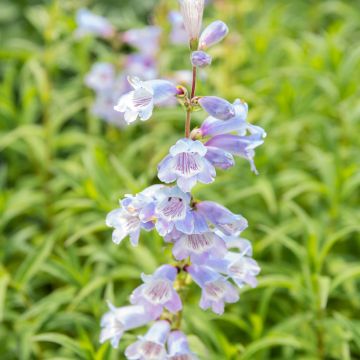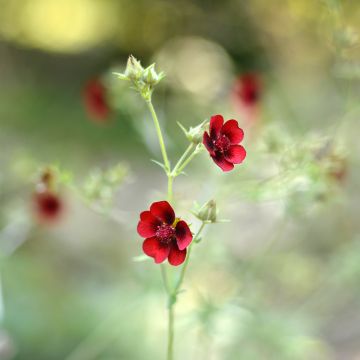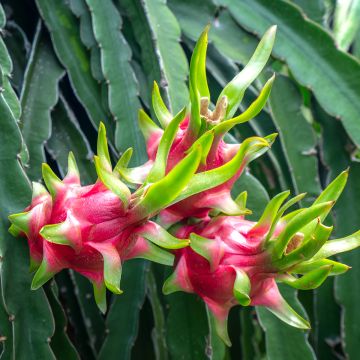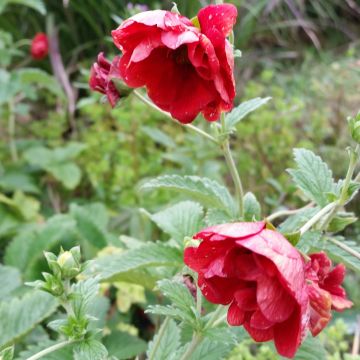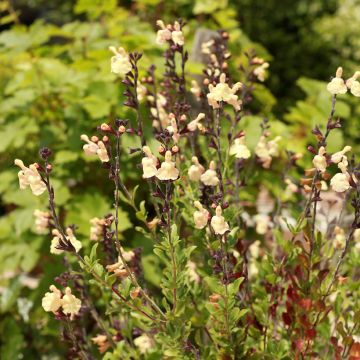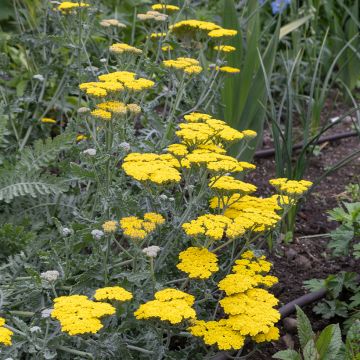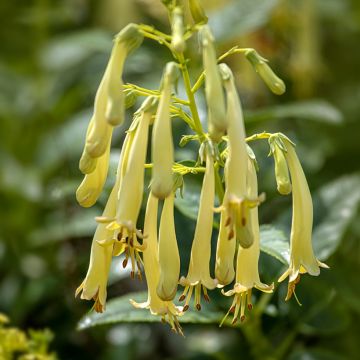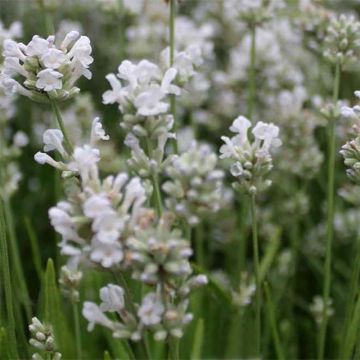Shipping country and language
Your country of residence may be:
Your country of residence is:
For a better user experience on our website, you can select:
Your shipping country:
-
Andorra
-
Austria
-
Belgium
-
Bulgaria
-
Canada
-
Chile
-
Croatia
-
Cyprus
-
Czechia
-
Denmark
-
Estonia
-
Finland
-
France
-
Germany
-
Greece
-
Hungary
-
Iceland
-
Ireland
-
Italy
-
Latvia
-
Lithuania
-
Luxembourg
-
Malta
-
Monaco
-
Netherlands
-
Poland
-
Portugal
-
Romania
-
Slovakia
-
Slovenia
-
Spain
-
Sweden
-
Switzerland
-
United Kingdom
We only deliver seed and bulb products to your country. If you add other products to your basket, they cannot be shipped.
Language:
-
French
-
German
-
Spanish
-
English
-
Italian
My Account
Hello
My wish lists
Log in / Register
Existing customer?
New customer?
Create an account to track your orders, access our customer service and, if you wish, make the most of our upcoming offers.
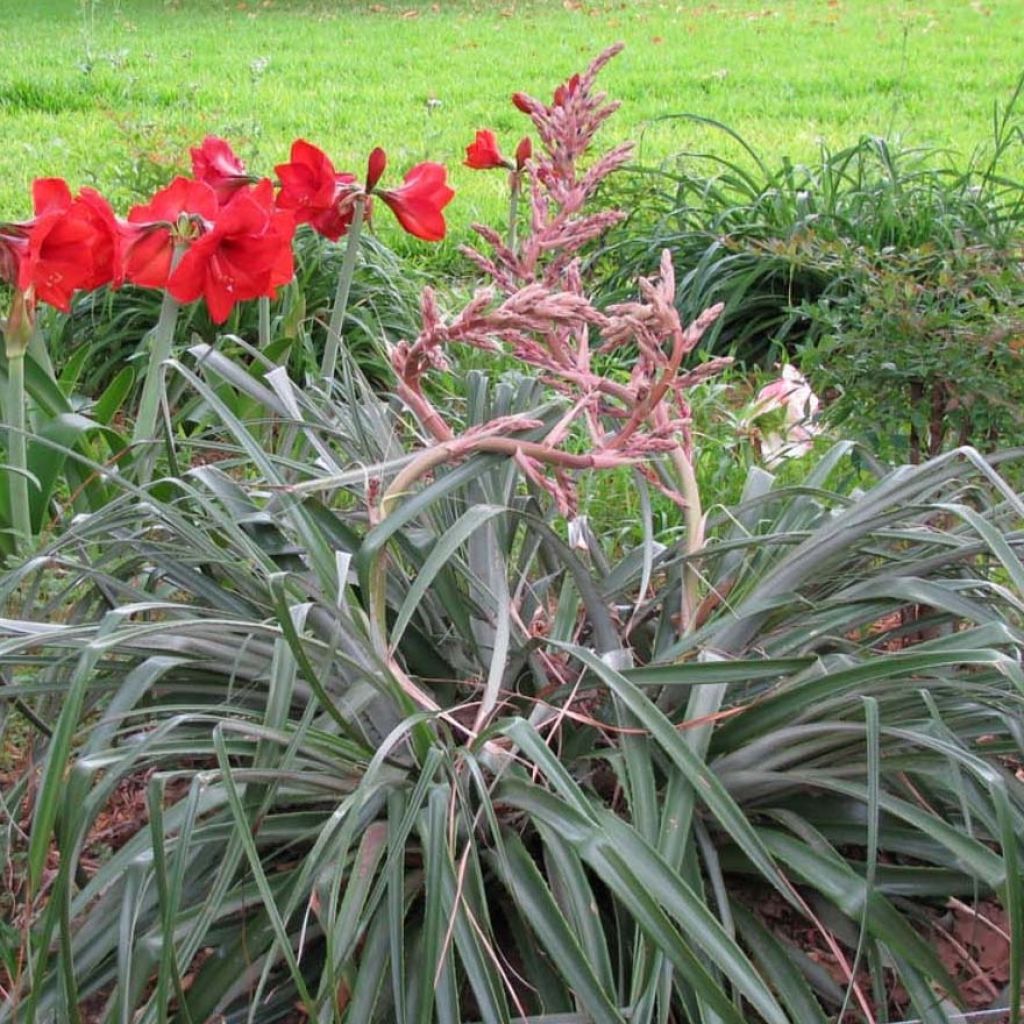

Puya assurgens
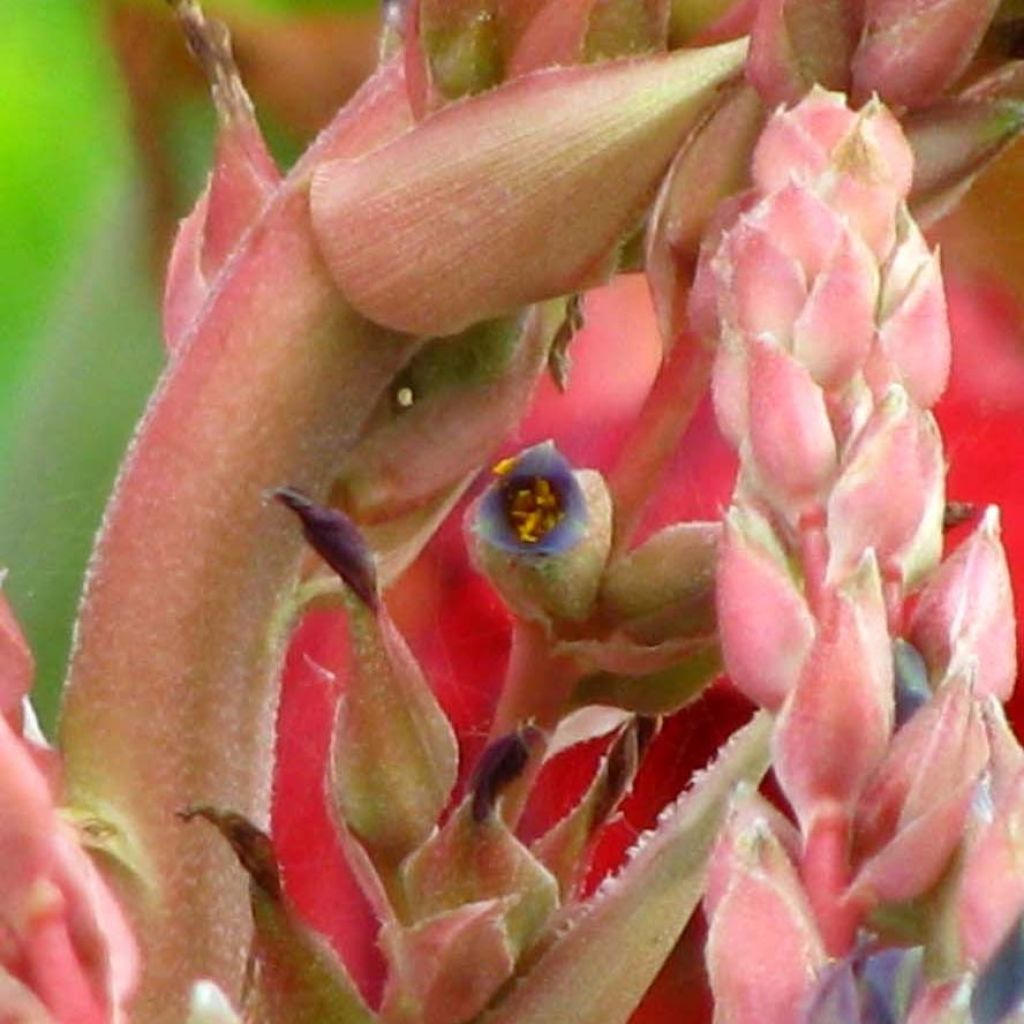

Puya assurgens
Puya assurgens
Puya assurgens
Argentinian Puya
Order in the next for dispatch today!
Dispatch by letter from €3.90.
Delivery charge from €5.90 Oversize package delivery charge from €6.90.
More information
This item is not available in your country.
Schedule delivery date,
and select date in basket
This plant carries a 12 months recovery warranty
More information
We guarantee the quality of our plants for a full growing cycle, and will replace at our expense any plant that fails to recover under normal climatic and planting conditions.
From €5.90 for pickup delivery and €6.90 for home delivery
Express home delivery from €8.90.
Does this plant fit my garden?
Set up your Plantfit profile →
Description
The Puya assurgens is an interesting species for its foliage, which is less armed with spines, its resistance to cold and dry weather, and its beautiful coral pink flowering. It is a plant related to pineapples that possesses the exotic charm of yuccas, Nolinas, and other Dasylirions, and can be easily grown in pots. It first forms a beautiful rosette of curved, green, slightly dentate leaves with a silvery reverse, from which an original flowering stem emerges after a few years, loaded with tubular flowers of a fairly soft coral pink colour. This puya can be planted on a rockery or a well-drained slope in a mild climate garden, where it will attract all eyes.
The Puya assurgens is a succulent perennial plant that belongs to the bromeliad family. It originates from a small region located around the Yala River and its lagoons, in the extreme northwest of Argentina, where it grows on rocky outcrops at altitudes between 1700 and 2050 m (5577 and 6726ft). This hardy species, which can withstand temperatures down to about -8°C (17.6°F), should be protected from humidity in winter or overwintered in a cold greenhouse. It is drought-resistant once established and suitable for xeriscaping. Its foliage persists throughout the year.
The plant grows quite slowly, forming a rosette of basal leaves that can reach 50 cm (20in) in height and 70 cm (28in) in width. The leaves are curved towards the ground, rather narrow, gutter-shaped, leathery, pointed, covered with a waxy film, and edged with fine teeth that tend to disappear over time. They are a fairly vivid green in color, but their reverse is covered with a waxy patina of glaucous to silver-grey colour. Flowering usually takes place in early summer in Europe, in June-July. From the centre of the mature rosette, one or more branched flowering stems, pink in colour and covered with floral buds, emerge at a height of 1 m (3ft) from the ground. The flowers, with 3 fleshy petals, are light coral pink with a green-blue throat. Puya assurgens most often persists thanks to the development of daughter rosettes that grow near the stump.
Puya assurgens requires being planted in a perfectly well-drained, dry soil in winter. This collector's plant finds its place in a rockery or a gravel garden in mild climates. To accompany it, consider, for example, yuccas, Dasylirions, Phormiums, and Nolinas. This plant is easily grown on a terrace, in a cactus-type substrate, where it will reign in a beautiful pot. As soon as the first cold weather arrives, you should store it, handling it with caution due to its spines, in the greenhouse or conservatory.
Report an error about the product description
Puya assurgens in pictures
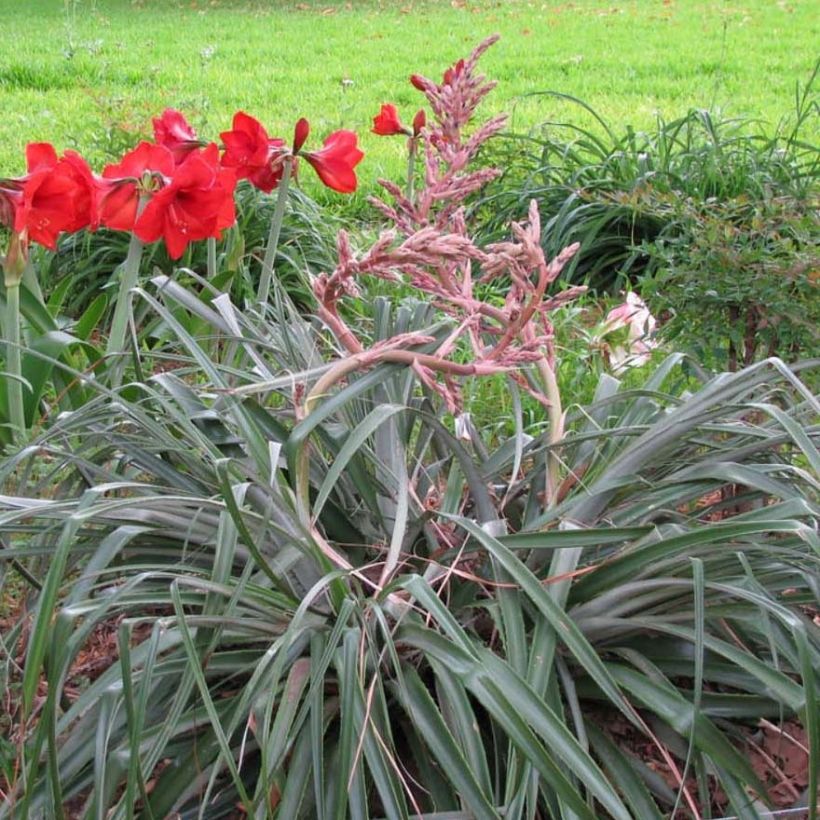

Flowering
Foliage
Plant habit
Botanical data
Puya
assurgens
Bromeliaceae
Argentinian Puya
South America
Other Puya
Planting and care
The Puya assurgens is preferably planted in spring. Choose a sunny location. Install it in a perfectly draining soil, enriched with pumice, potting soil and gravel. It will be hardy down to -7/-8 °C if the soil is almost dry in winter. To protect it from rain, place a thick mulch at its base and a plastic sheet on the rosette. In summer, it fears the combination of heat and excessive soil moisture that causes its roots to rot. Once established, this Puya generally does not require watering in summer. In very dry regions, occasional watering will be welcome, as well as a foliage shower at the end of a hot day. It is quite accommodating in terms of soil pH, which can be acidic, neutral or slightly alkaline.
Growing in pots: prepare a large container with a perforated bottom that you will fill with a mixture of potting soil, sand and pumice. Water regularly, without excessive watering. Add a bit of cactus or succulent fertiliser to the watering can in spring.
Planting period
Intended location
Care
This item has not been reviewed yet - be the first to leave a review about it.
Summer flowering perennials
Haven't found what you were looking for?
Hardiness is the lowest winter temperature a plant can endure without suffering serious damage or even dying. However, hardiness is affected by location (a sheltered area, such as a patio), protection (winter cover) and soil type (hardiness is improved by well-drained soil).

Photo Sharing Terms & Conditions
In order to encourage gardeners to interact and share their experiences, Promesse de fleurs offers various media enabling content to be uploaded onto its Site - in particular via the ‘Photo sharing’ module.
The User agrees to refrain from:
- Posting any content that is illegal, prejudicial, insulting, racist, inciteful to hatred, revisionist, contrary to public decency, that infringes on privacy or on the privacy rights of third parties, in particular the publicity rights of persons and goods, intellectual property rights, or the right to privacy.
- Submitting content on behalf of a third party;
- Impersonate the identity of a third party and/or publish any personal information about a third party;
In general, the User undertakes to refrain from any unethical behaviour.
All Content (in particular text, comments, files, images, photos, videos, creative works, etc.), which may be subject to property or intellectual property rights, image or other private rights, shall remain the property of the User, subject to the limited rights granted by the terms of the licence granted by Promesse de fleurs as stated below. Users are at liberty to publish or not to publish such Content on the Site, notably via the ‘Photo Sharing’ facility, and accept that this Content shall be made public and freely accessible, notably on the Internet.
Users further acknowledge, undertake to have ,and guarantee that they hold all necessary rights and permissions to publish such material on the Site, in particular with regard to the legislation in force pertaining to any privacy, property, intellectual property, image, or contractual rights, or rights of any other nature. By publishing such Content on the Site, Users acknowledge accepting full liability as publishers of the Content within the meaning of the law, and grant Promesse de fleurs, free of charge, an inclusive, worldwide licence for the said Content for the entire duration of its publication, including all reproduction, representation, up/downloading, displaying, performing, transmission, and storage rights.
Users also grant permission for their name to be linked to the Content and accept that this link may not always be made available.
By engaging in posting material, Users consent to their Content becoming automatically accessible on the Internet, in particular on other sites and/or blogs and/or web pages of the Promesse de fleurs site, including in particular social pages and the Promesse de fleurs catalogue.
Users may secure the removal of entrusted content free of charge by issuing a simple request via our contact form.
The flowering period indicated on our website applies to countries and regions located in USDA zone 8 (France, the United Kingdom, Ireland, the Netherlands, etc.)
It will vary according to where you live:
- In zones 9 to 10 (Italy, Spain, Greece, etc.), flowering will occur about 2 to 4 weeks earlier.
- In zones 6 to 7 (Germany, Poland, Slovenia, and lower mountainous regions), flowering will be delayed by 2 to 3 weeks.
- In zone 5 (Central Europe, Scandinavia), blooming will be delayed by 3 to 5 weeks.
In temperate climates, pruning of spring-flowering shrubs (forsythia, spireas, etc.) should be done just after flowering.
Pruning of summer-flowering shrubs (Indian Lilac, Perovskia, etc.) can be done in winter or spring.
In cold regions as well as with frost-sensitive plants, avoid pruning too early when severe frosts may still occur.
The planting period indicated on our website applies to countries and regions located in USDA zone 8 (France, United Kingdom, Ireland, Netherlands).
It will vary according to where you live:
- In Mediterranean zones (Marseille, Madrid, Milan, etc.), autumn and winter are the best planting periods.
- In continental zones (Strasbourg, Munich, Vienna, etc.), delay planting by 2 to 3 weeks in spring and bring it forward by 2 to 4 weeks in autumn.
- In mountainous regions (the Alps, Pyrenees, Carpathians, etc.), it is best to plant in late spring (May-June) or late summer (August-September).
The harvesting period indicated on our website applies to countries and regions in USDA zone 8 (France, England, Ireland, the Netherlands).
In colder areas (Scandinavia, Poland, Austria...) fruit and vegetable harvests are likely to be delayed by 3-4 weeks.
In warmer areas (Italy, Spain, Greece, etc.), harvesting will probably take place earlier, depending on weather conditions.
The sowing periods indicated on our website apply to countries and regions within USDA Zone 8 (France, UK, Ireland, Netherlands).
In colder areas (Scandinavia, Poland, Austria...), delay any outdoor sowing by 3-4 weeks, or sow under glass.
In warmer climes (Italy, Spain, Greece, etc.), bring outdoor sowing forward by a few weeks.
